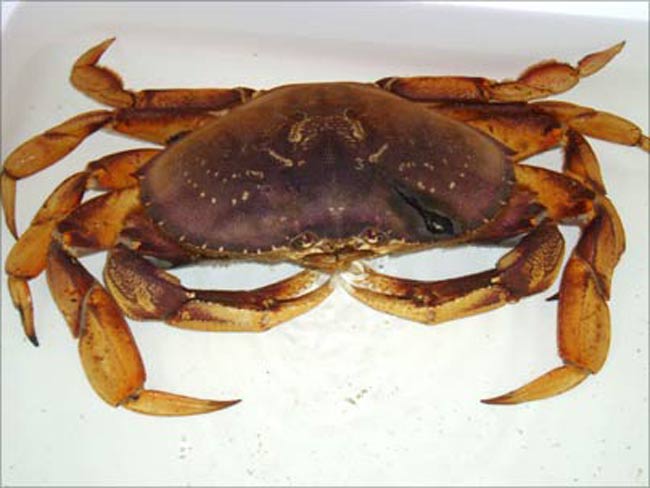Pacific Crab Invades Atlantic

There's a new face appearing on Atlantic Ocean "most wanted" posters: the Dungeness crab. Marine scientists are worried that this west coast crab could be invading east coast waters after it was unexpectedly found off the coast of Massachusetts by a fisherman on July 19.
Lou Williams, the fisherman, took the out-of-place catch to aquaculture specialists at the Massachusetts Institute of Technology who sent out mug shots to other scientists around the country. They positively identified the crab as an adult male Dungeness.
Biologists worry about the appearance of exotic species, or bioinvaders, because they can stake their ground in a new ecosystem and push out native species.
The MIT scientists are particularly worried in this case because they don't know how the crab ended up so far away from home, and whether any more of its clan are lurking in the coastal waters.
The crab could have been purchased at a live seafood market and later released in the coastal waters. Judy Pederson, an MIT marine invasive species specialist, would have been more worried if a female Dungeness had been found, because she would have arrived by some other means, since only males are caught and sold in markets.
Pederson says that an invading species is unlikely to cross-breed with native ones, but a male Dungeness could bring its own hordes of invaders by carrying diseases or barnacles on its back from the Pacific.
The MIT scientists are distributing posters and hoping that fishermen will keep their eyes peeled for anymore unwanted invaders.
Sign up for the Live Science daily newsletter now
Get the world’s most fascinating discoveries delivered straight to your inbox.
- The Biggest Popular Myths
- Invasive Creatures Attack Like Internet Viruses
- Toxic Toads Evolve Long Legs and Take Over Australia
- Boiling Lobsters Likely Feel No Pain, Study Concludes
- 9-Pound Crab Has Bug's Nose

Andrea Thompson is an associate editor at Scientific American, where she covers sustainability, energy and the environment. Prior to that, she was a senior writer covering climate science at Climate Central and a reporter and editor at Live Science, where she primarily covered Earth science and the environment. She holds a graduate degree in science health and environmental reporting from New York University, as well as a bachelor of science and and masters of science in atmospheric chemistry from the Georgia Institute of Technology.










